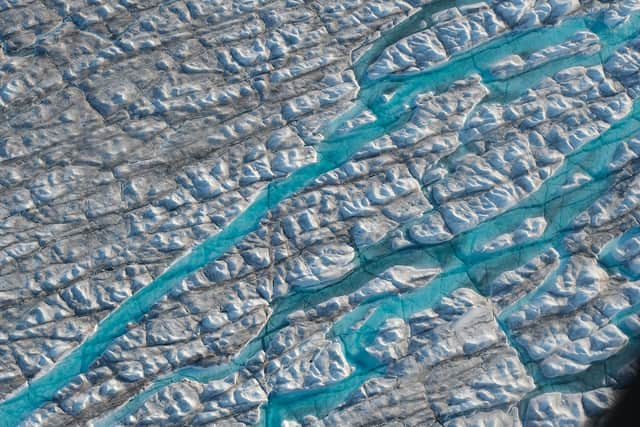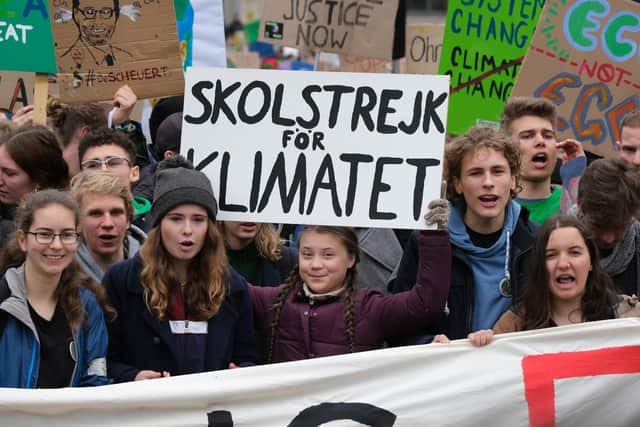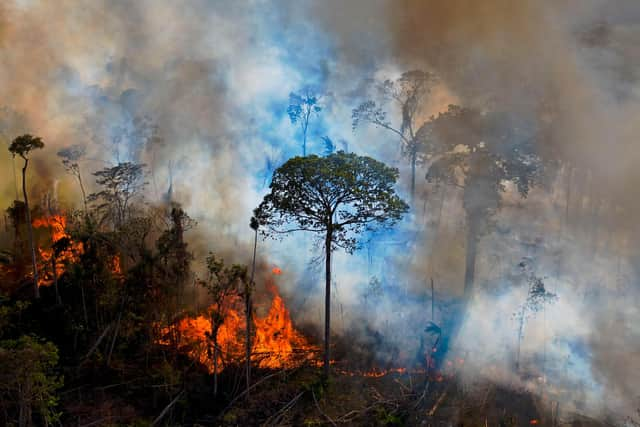COP26: Why climate change tipping points that could lead to runaway global warming keep me awake at night – Professor Tim Lenton
Of course the same things keep me awake as anyone else. Sometimes I worry about my kids and their future. The problem is that concern is laced with the knowledge that we are starting to witness damaging climate tipping points.
What is a tipping point? Being awake or asleep is a good example: They are two different states, of the mind and body, with a tipping point between. As you drift towards sleep, it feels as if consciousness is becoming unstable. Sometimes a little worry escalates and snaps you back awake, but if you are lucky you get to a point where counting one more sheep tips you into a transition where the lights of consciousness go out for the night.
Advertisement
Hide AdAdvertisement
Hide AdMore generally, a tipping point is where a small change makes a big difference to a system. Like when a little bit of extra warming triggers a large change in some part of the climate.
Tipping points can happen thanks to what scientists and engineers call feedback loops: A small initial change has consequences that feed back to amplify it. Then the now-larger change goes around the loop and gets further amplified, and so on.
For example, as Arctic sea-ice melts, it exposes a much darker ocean surface that absorbs more sunlight, warming things up and melting more sea-ice, which warms things further.
Usually, such feedbacks are constrained: the initial change is amplified, but not enough for the whole thing to ‘runaway’ out of control. However, sometimes the feedback gets strong enough to propel change from one state to another. (You may have experienced such runaway feedback at a gig where the band puts a mic too close to a speaker.)


The point where that happens, if it happens, is the tipping point. What keeps me awake at night is the knowledge that amplifying feedbacks are getting strong enough to bring us perilously close to some climate tipping points.
In Greenland, melt of the ice sheet is accelerating and, as the top of the ice sheet drops in altitude, this warms it up further, accelerating melting. In part of West Antarctica, glaciers are retreating in a way that accelerates the retreat. Over centuries these ice-sheet tipping points could raise sea levels by over ten metres. Today one billion people live within ten metres of sea level.
In the ocean, the Atlantic’s great overturning circulation has weakened 15 per cent since the 1950s. Arctic warming and meltwater pouring off Greenland risk stopping the sinking of surface water in the seas around Greenland that drives the circulation, plunging Europe into a climate like the ‘Little Ice Age’.
On land, the Amazon rainforest supports itself by recycling its own rainfall and suppressing fires, but increasing droughts and deforestation risk tipping it into a dry, fiery savannah state. The list goes on.


Advertisement
Hide AdAdvertisement
Hide AdClimate scientists used to think tipping points were unlikely until we reached 4C of global warming. Now we see we are in the danger zone at just over 1C of global warming.
Worse still, these tipping points interact such that tipping one can make tipping the next more likely. In the worst case, this could lead to ‘domino dynamics’, where tipping one thing tips the next, and runaway climate change.
Thankfully, we are not at that point yet and we are not even sure if it is possible – but, crucially, we cannot rule it out.
So: how can we avoid climate tipping points? The answer is enshrined in the 2015 Paris Agreement: strive to limit global warming to 1.5C. Unfortunately, we have left it very late to realise that and still be able to do something about it.


To have an even chance of limiting global warming to 1.5C, all of our greenhouse gas emissions must be halved by 2030 and stopped by mid-century. Fossil-fuel burning must stop. Deforestation must stop. Food systems have to be transformed. This needs a global transformation.
Perhaps unsurprisingly, given all this, the other question I increasingly get asked is: how do you get out of bed in the morning? The answer, apart from needing to help get my kids to school, is the knowledge that there are positive tipping points we can all help trigger to accelerate the change we need.
When Greta Thunberg started her school strike in front of the Swedish parliament, that made it easier for the next person to join her, who made it slightly easier for the next person, and so on.
Before we knew it, hundreds of thousands of us were marching on the streets demanding political action to tackle climate change. Happily, positive tipping points of action are starting to emerge.
Advertisement
Hide AdAdvertisement
Hide AdThe rapid uptake of electric vehicles in Norway is one, the shutting down of coal power generation in the UK since 2012 is another. These are propelled by well-understood amplifying feedbacks, including ‘social contagion’, learning-by-doing, and achieving economies of scale.
Positive tipping points are also starting to interact in a good way: the electric vehicle revolution is propelling ever-cheaper battery technology. That cheap storage capacity helps solve the critical challenge with renewable energy: balancing supply and demand. Ever cheaper renewable power is feeding back to make electric transportation cheaper.
Now we need leaders from among us to work together to trigger positive tipping. That is what COP26 in Glasgow needs to deliver, but it is not just down to the politicians.
We can all play a role in triggering positive tipping points – with our choices as consumers, what we eat, how we travel, where we invest our pensions. This can give us all back a sense of power when faced with the enormity of climate change. It is our only option left to avoid climate tipping points. It might even help me sleep at night.
Professor Tim Lenton is director of the Global Systems Institute at the University of Exeter
A message from the Editor:
Thank you for reading this article. We're more reliant on your support than ever as the shift in consumer habits brought about by coronavirus impacts our advertisers.
If you haven't already, please consider supporting our trusted, fact-checked journalism by taking out a digital subscription.
Comments
Want to join the conversation? Please or to comment on this article.
